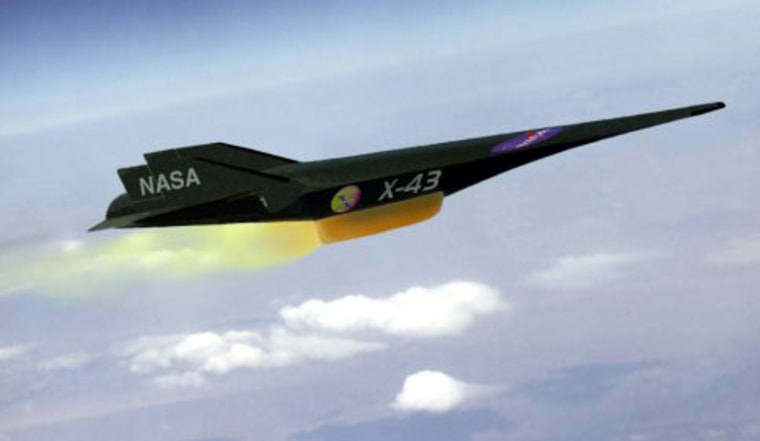NASA is making preparations for a renewed test of an experimental aircraft designed to cruise at hypersonic speeds, after a dress rehearsal for the flight went off without a hitch.
The X-plane, dubbed X-43A, was successfully toted under the wing of a parent B-52 plane Monday during a captive-carry flight that ran through the motions for a free-flying mission tentatively scheduled for Feb. 21.
The X-43A test consisted of a two-hour flight from NASA's Dryden Flight Research Center at Edwards Air Force Base, Calif., out over the Pacific Missile Test Range and back. Throughout the flight, the X-43A and its attached Pegasus rocket booster, remained locked to its B-52 mother ship.
"The flight went very smoothly," said Paul Rekauf, Dryden's X-43A deputy project manager. "Our only concern was potential turbulence at high altitude, but as it turns out we didn't have any."

The upcoming X-43A flight is the second of three tests planned under NASA's Hyper-X program. The tests use a Pegasus booster to accelerate up to Mach 7, or seven times the speed of sound, and then employ a scramjet to reach hypersonic speeds. The air-breathing scramjet — a term that's short for "supersonic ramjet" — is expected to use the initial supersonic speed of the X-43A to force air into its combustion chamber, pressurize it, then ignite it with the help of hydrogen fuel.
NASA hopes that hypersonic technology will lead to the development of new vehicles that could reach Earth orbit faster and cheaper than the current fleet of shuttles.
The push for reliable and affordable access to space folds in well with the lofty goals set by President Bush earlier this month when he announced the retirement of NASA's space shuttle program by 2010 and a renewed effort to send humans to the moon and Mars.
Rekauf said his team is now gearing up for the Feb. 21 flight test, which will mark the X-43A's return to flight after its first showing ended in failure.
On June 2, 2001, the first X-43A vehicle was lost just moments after the ignition of its Pegasus booster. A third X-43A test will target speeds of up to Mach 10.
